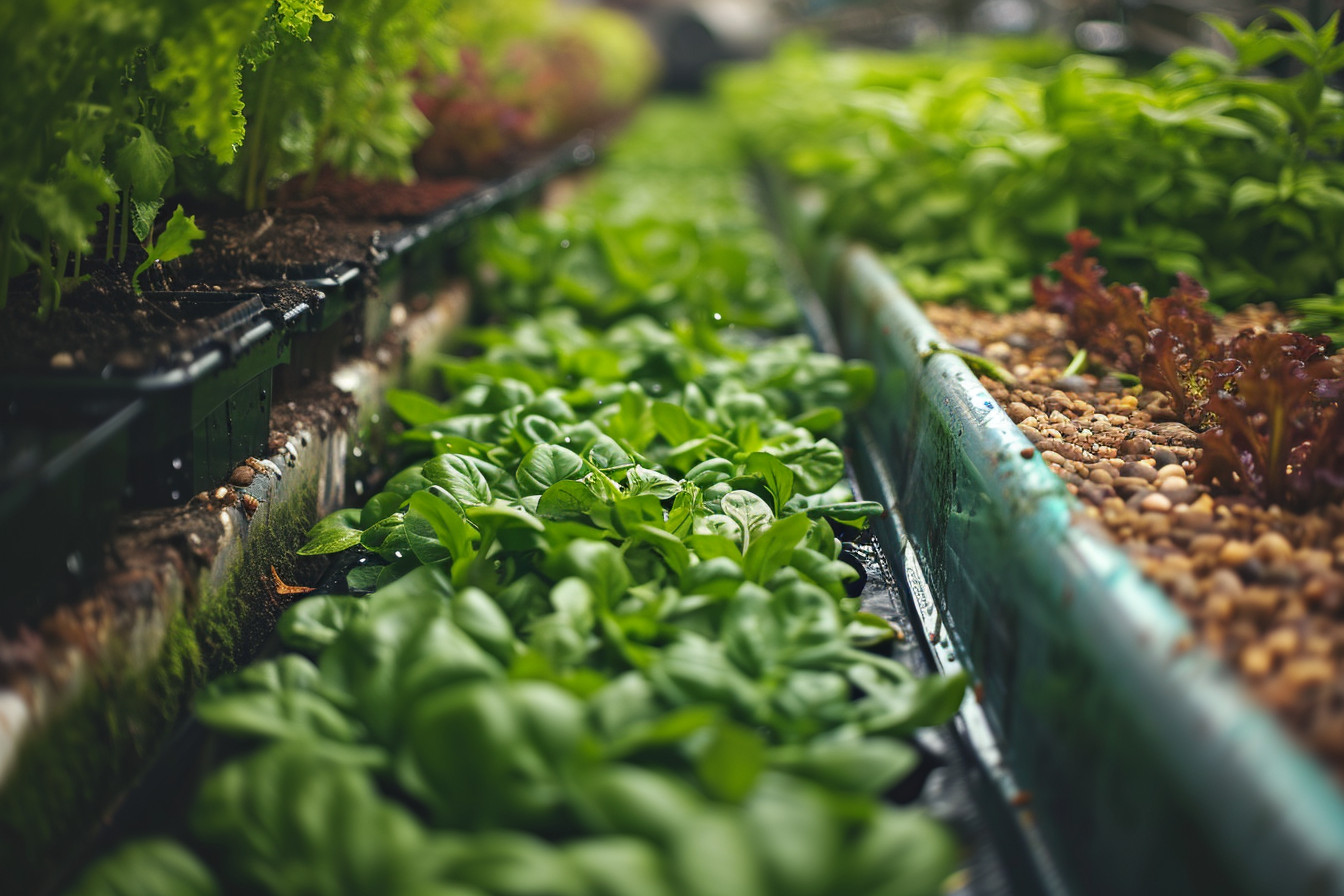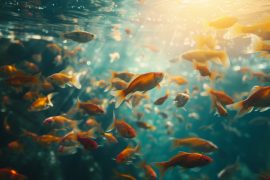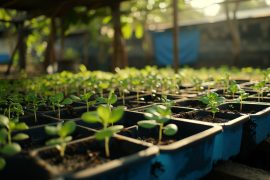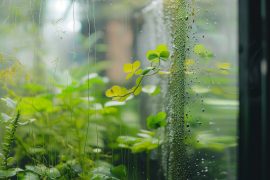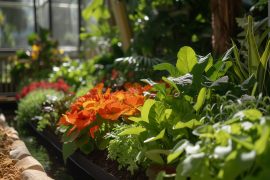I’ve always found a certain peace in the gentle hum of an aquaponic system, where fish and plants thrive together in perfect harmony. It’s like a tranquil garden oasis that not only calms the soul but also sparks a deep connection with the cycles of nature.
Diving into the world of aquaponics, I’ve learned that it’s not just about the serene vibe; it’s a smart, sustainable way to garden. But to keep this delicate ecosystem happy, you’ve gotta get your hands dirty with some nutrient management. Don’t worry, I’ll break it all down for you, making it super easy to understand, even if you’re new to this.
Importance of Nutrient Management in Aquaponic Systems
Plants are like people in a way. They need a balanced diet to grow strong and healthy. In aquaponics, nutrient management is the secret sauce to keep both the plants and fish thriving. You see, the fish provide nutrients through their waste, but it’s not always the all-you-can-eat buffet plants crave.
For me, there’s something almost meditative about monitoring my aquaponic system. I get to observe the closed-loop harmony, where the water cycles from the fish tank to the plant beds. But the real harmony comes from managing those nutrients right. Because in an aquaponic system, it’s not just about feeding the fish; it’s about feeding the plants, too, and making sure they get just what they need.
Here’s a bit of know-how I’ve picked up along the way:
- Ammonia Levels: Fish waste contains ammonia. Too much, and it’s toxic for the fish; too little, and plants starve.
- Nitrite and Nitrate: Beneficial bacteria convert ammonia to nitrite and then to nitrate, which plants absorb as food. It’s a classic win-win when balanced correctly.
- pH Levels: The water’s acidity or alkalinity can affect nutrient uptake. Keep this in check for happy, healthy plants.
Getting the right balance is crucial. If the fish are overfed, the excess waste can overwhelm the system. On the flip side, underfed fish won’t produce enough nutrients, putting the plants on a diet they didn’t sign up for. It’s all about equilibrium.
When I started out, I made mistakes. Who wouldn’t? But each error taught me something new. I’ve learned to look out for telltale signs: are the plant leaves turning yellow? Maybe there’s a nutrient deficiency. Fish acting a bit slow? Could be the water quality. Spot these issues early, and you can tweak the system for an almost zen-like balance.
Picture this: I’m out there, early morning, just me and my aquaponic setup. I test the water, adjust fish feed, check plant roots, and it’s peaceful. Real peaceful. There’s something incredibly rewarding about nurturing this little ecosystem where I’m the caretaker of both fish and foliage.
Understanding the Nutrient Cycle in Aquaponics
Aquaponics presents a beautiful symmetry between fish and plants, and understanding the nutrient cycle is like peering into the underlying poetry of this system. Here’s where the magic happens – it’s all about balance and harmony. Learning about this cycle turned my garden into a sanctuary, and I’m here to walk you through every step.
The cycle kicks off with the fish. They’re more than just beautiful swimmers; they’re crucial contributors to the garden’s nutrition through their waste. Ammonia is released into the water, a byproduct of our aquatic friends’ life processes. In a traditional setup, ammonia might be problematic, but in aquaponics, it’s the start of a nutrient-rich journey.
Next, we introduce beneficial bacteria. These microscopic maestros convert ammonia into nitrites and then into nitrates – the plant superfood. I’ve come to see these bacteria as my silent gardening partners, often overlooked but doing the lion’s share of the work.
As these converted nutrients build, we reach the portion where the plants step in. They absorb the nitrates, effectively cleaning the water for the fish. It’s pretty astonishing, watching my green leafy buddies thrive as they sip on what is essentially recycled fish waste. Talk about a sustainable feast!
So here’s a rough outline of the nutrient cycle as I’ve experienced it:
- Fish Waste Production: Fish excrete waste, adding ammonia to the water.
- Bacterial Conversion: Beneficial bacteria in the grow media transform ammonia into nitrites and then nitrates.
- Plant Nutrient Uptake: Plants take up nitrates as nutrients, purifying the water in the process.
To keep this cycle running smoothly, there’s a need to monitor and adjust. I can’t tell you how many times I’ve been glad for my testing kit. By checking the levels of ammonia, nitrites, and nitrates, and keeping an eye on the pH, I ensure my aquatic ecosystem isn’t thrown out of whack.
One thing that fascinates me to no end is that the roots of my plants play a dual role. They’re not just nutrient-suckers; they provide a home for the bacteria. That’s right, those busy bacteria set up shop right on the roots and the surrounding media, making for one efficient little hub of activity.
Monitoring Water Quality Parameters
As someone deeply enamored by the serenity of aquaponics, I understand that maintaining the tranquility of our watery garden hinges on diligent observation. Water quality is the lifeblood of any aquaponic ecosystem, and regular monitoring ensures our aquatic companions and verdant plants thrive in harmony.
The parameters that I keep a keen eye on include pH, ammonia, nitrites, and nitrates. They’re the cornerstones of a successful aquaponic system. Let me elaborate on each one:
- pH: This measures the acidity or alkalinity of water. Fish and plants are quite sensitive to pH changes, so maintaining a stable range – typically between 6.8 and 7.2 – is essential.
- Ammonia: High levels can be deadly for fish, highlighting the need for a well-established bacterial colony to convert it into less harmful substances.
- Nitrites and Nitrates: Although nitrites must be kept low, nitrates – the final byproduct – are what our plants are yearning for.
It’s akin to a delicate dance where each partner relies on the other’s steps to avoid a misstep.
For pH, nitrites, and ammonia, test kits and meters are my trusty tools. I’ve got to admit that watching those readings stabilize after tweaking the system is pretty rewarding. It’s like finding peace in a bottle – you know you’ve nailed the balance when those figures align just right.
Let’s sprinkle in some numbers to get a clearer picture:
| Parameter | Ideal Range |
|---|---|
| pH | 6.8 – 7.2 |
| Ammonia | 0 ppm (parts per million) |
| Nitrites | 0 ppm |
| Nitrates | 5 – 150 ppm |
Regular check-ups, at least weekly, prevent potential issues from escalating. If the pH sways, I may toss in some calcium carbonate, while an imbalance in ammonia or nitrites signals it’s time to reassess the fish-to-plant ratio and feed practices.
Hands down, the best part is seeing the results — vibrant fish swimming energetically and lush plants growing bountifully. Every glimpse into that clear water, with roots entwined and ripples reflecting the calm overhead, feels like a hushed conversation with Mother Nature herself.
Managing Fish Feed and Waste
Feeding my fish is one of the most serene moments of my day. There’s something inherently peaceful about watching them glide through the water, coming up to nibble on the feed I sprinkle over the surface. But beyond the tranquility, I’ve learned that managing fish feed and waste is pivotal to the health of my aquaponic system. It’s a dance of balance, where the right amount of feed translates into nutrients for my plants without tipping the scales towards poor water quality.
Fish feed directly affects the nutrient levels in the water. Overfeeding can lead to excess waste, which in turn can increase ammonia levels, while underfeeding might not provide enough nutrients for plant growth. I stick to high-quality feed, which has a better conversion rate – meaning more of it is turned into fish mass rather than waste. It’s essential stuff, as it also reduces the amount of uneaten food that turns into sludge at the bottom of the tank.
When it comes to waste, I’m always amazed at how efficiently a well-tuned aquaponics system can convert something that’s ordinarily a problem in aquaculture into a valuable resource. Fish excrete ammonia, which can be toxic at high levels but is transformed by beneficial bacteria into nitrates – plant food in its most accessible form. This nitrification process is something I explain to visitors with a sense of pride, knowing that I’ve created an ecosystem that mimics nature’s own recycling methods.
Keeping an eye on this delicate cycle means regularly testing my water. I recall a time when a slight slip in monitoring led to a spike in nitrites, which are just a step in the conversion process but are harmful to fish in high concentrations. With swift testing and water adjustments, I managed to bring the levels back to normal, ensuring that both my fish and plants remained healthy.
Throughout history, the garden has been a place of learning and reflection, and my aquaponic system is no different. As I teach others about this sustainable method, I often reflect on the calming effect it has on both me and my visitors. There’s a deep connection here, one that illustrates the circle of life in such a tangible and immediate way. By sharing my knowledge on the technicalities in layman’s terms, I make this system accessible to everyone who tours my garden.
Balancing Nutrients for Plant Growth
When I tend to my aquaponic garden, there’s a certain tranquility in making sure everything is in harmony. And balancing nutrients for plant growth is a big part of that. It’s kind of like mixing the perfect nutrient cocktail for my green friends. Too little and they won’t flourish; too much and, well, it’s a slippery slope to algae central.
So, let’s chat about the nitty-gritty without getting too technical. Plants need various nutrients, nitrogen, phosphorus, and potassium being the big three. Each plays a vital role – nitrogen for leaf growth, phosphorus for roots and flowers, and potassium for overall health. But these are just the headliners in a whole crew of nutrients that plants need to thrive.
In my aquaponic system, the fish feed sort of sets the stage for nutrient levels. It’s a delicate dance — I need to feed my fish enough so that they’re happy and healthy, and produce enough waste to convert into plant food. But at the same time, I can’t go overboard. It’s a balance that I’m constantly adjusting based on how the plants and fish are doing.
Getting Into the Weeds
If you’re wondering about the specifics, let me dig into my personal experiences a bit. I had to get acquainted with some friends called nitrifying bacteria. These little guys are crucial for transforming the ammonia from fish waste into nitrates, which plants adore. Without them, my system would go haywire.
At first, getting nutrients balanced was a rough road. I saw my lovely lettuce looking a bit… lackluster. After some testing — and I do mean regular testing — I realized they were screaming out for more nitrogen. I adjusted their diet by shifting the feed composition, and boom, it was like a green explosion in the best possible way.
Keeping It Green
Mind you, it’s not only about nitrogen. Other nutrients, like iron, calcium, and magnesium, also come into play. I’ve learned to recognize the signs — yellowing leaves might signal an iron shortage, while stunted growth could mean not enough calcium. It’s like being a plant doctor, diagnosing issues and prescribing solutions.
Final Thought
Mastering nutrient management in aquaponics is like being a conductor of a finely tuned orchestra. It’s all about finding that sweet spot where your fish are happy and your plants are thriving. I’ve learned that it takes patience, observation, and a willingness to adjust on the fly. Remember, those nitrifying bacteria are your unseen heroes, and regular water testing is your best tool to keep everything in harmony. Trust me, when you get it right, the payoff in lush greens and healthy fish is incredibly rewarding. Here’s to the delicate dance of aquaponics!
